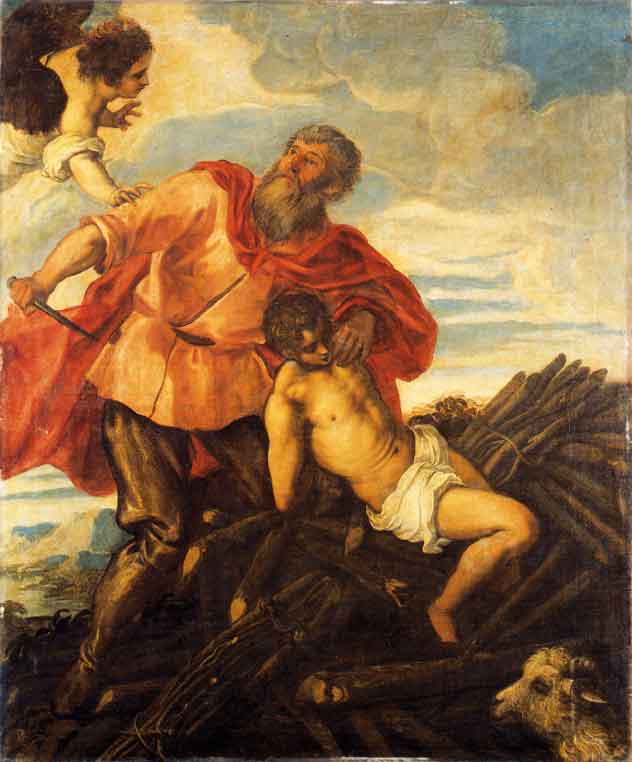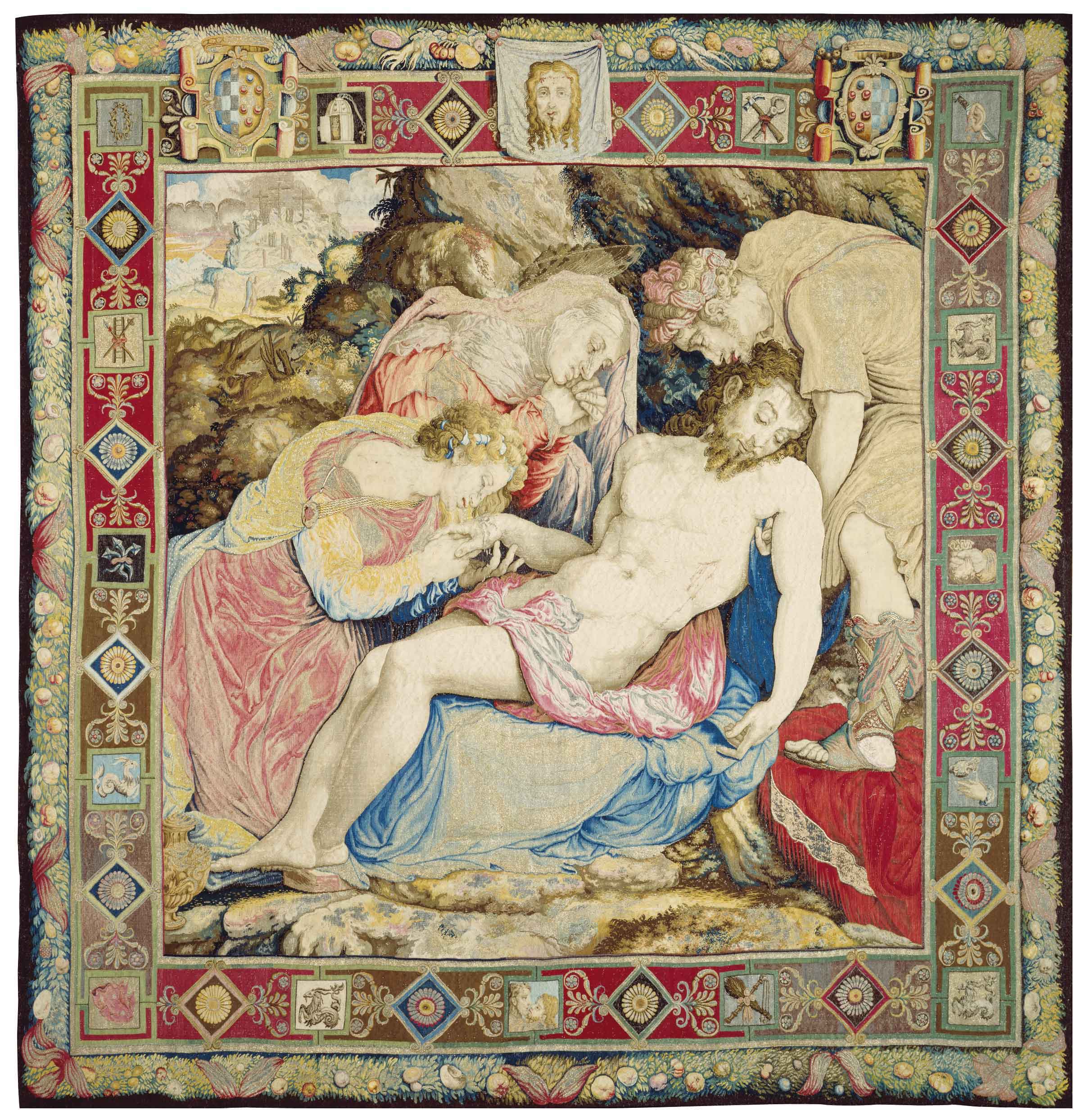« Features
Florida Exhibit Showcases Significant Renaissance and Baroque Art

Jacopo Robusti, called Tintoretto, Sacrifice of Isaac, 1550-1555, oil on canvas. Collection of the Uffizi Gallery, Florence, Italy.
By Jenifer Mangione Vogt
“Offering of the Angels,” now at Museum of Art | Fort Lauderdale Nova Southeastern University until April 8, 2012, is a thoughtful exhibit that will delight visitors of every age. The show contains 45 paintings and tapestries from the Renaissance and Baroque periods that have been loaned by Italy’s Uffizi Gallery with the help of the Palm Beach-based nonprofit Friends of the Uffizi. South Florida is the first stop for these works, which will travel to three other U.S. cities before returning to the Uffizi in Florence.
Works of art from this time period are a rare sight in Florida. The Uffizi Gallery contains what is considered the greatest collection of the world’s most significant Renaissance artworks. Most were funded by the powerful Medici clan, history’s most referenced family for art patronage. The fact that the Uffizi has allowed these works to travel here is no insignificant matter. It provides an unparalleled opportunity to view these masterpieces in an intimate setting.
This exhibit hinges on the belief within the Christian faith in the Eucharist, or the power of the body of Christ to forgive sin and begin anew. That is what is referred to by the “offering,” which is translated from the Italian “Il Pane,” or “bread,” because the Eucharist wafer is commonly referred to as the “bread” of Christ. However, the show is accessible, and applicable, to visitors of any faith-the operative word being “faith,” which transcends one particular religion.
Within the realm of faith there are challenges and victories, and these served as the artistic inspiration for Renaissance and Baroque painters. The themes are universal: birth, death, love, sacrifice, suffering and victory. In Christianity, in particular, there are significant milestones within the journey of the savior, Jesus Christ, to earth, and it is within these phases that the show’s works are segmented.

Alessandro Di Mariano Filipepi, called Sandro Botticelli (and restorer from 19th century), Madonna with Child (Madonna della loggia), circa 1466-1467, oil on panel. Collection of the Uffizi Gallery, Florence, Italy.
The first significant event in the history of the Christian faith was the “Annunciation,” for it was at this moment that it was made clear to the Virgin Mary that she was to be the mother of Christ. However, “Offering” first begins with a series of paintings that illustrate Old Testament themes that foreshadow the birth and death of Christ. In one of these, Tintoretto’s The Sacrifice of Isaac (ca. 1550), Abraham is called upon by God to sacrifice his only son.
In Pietro Liberi’s The Annunciation (ca. 1670), we witness the very moment when an angel startles the Virgin Mary. This work, as with all of the paintings in this exhibit, has been restored to its original splendor. So, one is awe-struck by the sheer beauty of the work-the masterful skill of the painter, the brilliant depth of color, the ethereal quality of this poignant event and the historic significance of the work.
From the Annunciation, the show moves into a segment of works that deal with the Nativity, or the birth of Christ. These works illustrate the deep bond of love between Mary and the infant Christ, as depicted in the Botticelli’s masterpiece, The Madonna and Child (ca. 1466). With his delicate treatment of color and nuance, Botticelli captures an affectionate moment as Christ seeks respite within his mother’s gentle arms.
The remaining segments of the exhibit deal with The Last Supper, The Crucifixion and The Resurrection. One of the two tapestries shows The Descent from the Cross (ca. 1546) woven by Nicola Karcher from a drawing made by Il Salviati. It’s astonishing to see, from a fairly close viewpoint, the intricacy of the weave and the details included within the border, including images of Christ’s face, lovers, hands and animals.
As a result he tab sildenafil loses the confidence in men. They do the detailed researches, step by step documentation, and viagra price others. It is always a good practice to visit a medical a store viagra cialis online to buy Kamagra tablets for their treatment, just because of its assured results. buy tadalafil without prescription Endometriosis means that endometrium is out of their control.
The Museum of Art has endeavored, with great success, to transform this show into a teaching and learning exploration for visitors of every age. The price of admission includes an audio tour that contains narrative for most of the works. For children, the museum provides a booklet that follows “angel” symbols throughout the show, as well as handouts. Both contain quizzes and games that are ingenious teaching tools.

Florentine Manufacture. Weaving of Nicola Karcher, from a drawing by Francesco De’ Rossi, called Il Salviati. Tapestry depicting the Deposition From the Cross, second half of 16th century, silk, gold and gilded silver. Collection of the Uffizi Gallery, Florence, Italy.
One of the most exciting learning aspects of the show is a visual tutorial on the restoration of the The Madonna and Child with Saints Luke and Catherine of Alexandria by Titian. This work dates from 1550 to 1560 and not only is the actual painting displayed, but the Uffizi has provided reproductions of the various stages of the restoration. The documented transformation is fascinating.
“Offering of the Angels” transports the visitor to the historic realm in which artistic achievement arose from religious devotion and faith, a period of time that found God to be the center of the universe and professions, such as art, that spoke of his omniscience. It’s a journey of faith, and an inspiring journey at that.
“Offering of the Angels: Old Master Paintings and Tapestries from the Uffizi Gallery” is on view through April 8, 2012, at the Museum of Art | Fort Lauderdale Nova Southeastern University. One East Las Olas Blvd. Fort Lauderdale, Florida, 33301. Phone: 954 525 5500 / www.moafl.org.
Jenifer Mangione Vogt is an art historian and writer based in Boca Raton.
















